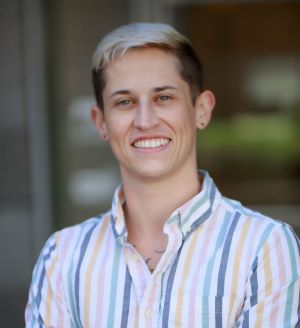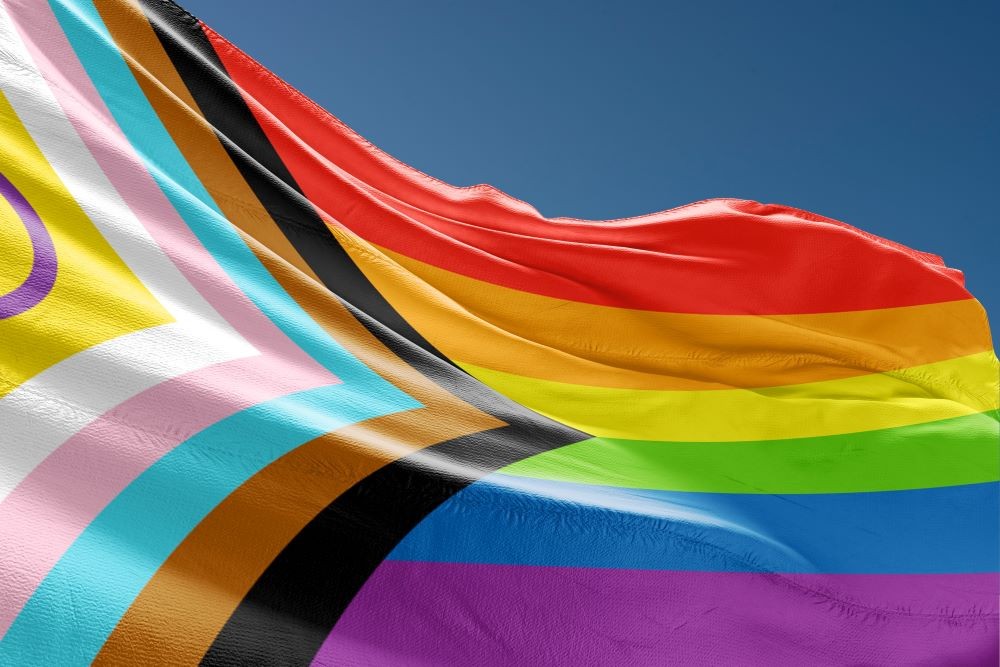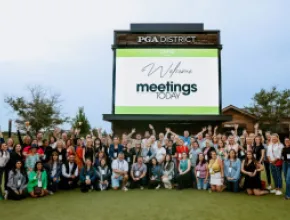
While transgender meeting and event planner Chase Brunson is very comfortable in the industry he’s in, he also realizes that meetings and events can be a profoundly uncomfortable place for other transgender people.
“Generally speaking, events can be really scary for trans people—it’s an environment that you’re not used to,” Brunson said. “It’s very different than, say, going to your favorite movie theater. I know my local movie theater, what that bathroom looks like—I know when I walk in what I’m getting myself into. But when I go to an event, I don’t know how that event manager has things set up or what I’m walking into. And so, events can be really, really scary for trans people because they’re coming in completely blind to an environment that can be really counterproductive to their identity.”
On the positive side, Brunson, said that he’s never felt unaccepted in the meetings and events industry.
“I think that our industry is honestly one of the best places for queer and trans people to exist. I think that we are really open and really accepting,” he said. “I would say that we have a higher population of queer people that work in the hospitality industry than work in other industries. I think we’re also a little bit more compassionate with folks and a little bit friendlier than some other industries. I’ve never encountered any issues—I’ve only been uplifted by colleagues.”
[Related: Out and Proud: The Rise of LGBT+ Representation in the Meetings Industry]
Brunson relishes his role as a speaker and diversity and inclusion subject matter expert so he can help educate those in the industry and beyond about transgender people.
“I feel like our industry is really well poised to do a lot of good for the LGBTQ population,” he said. “It’s just recognizing that we have work to do, because anytime I speak to folks, or anytime I come out, they’re only curious; they only want to do the good thing.
“As far as navigating our spaces and going through events as a trans person, yeah, I do still run into the same issues that I’m trying to fix, like bathroom issues,” he continued. “I’ve been socially out for almost 10 years and on hormones for eight, and so that means that I ‘pass’ really well. I am first seen as the gender that I express—I identify as a male; I’m seen as a male. For trans people who don’t necessarily pass, navigating our event spaces is a little bit more difficult. And that’s where things like pronouns on your name badges come in handy, and the bathroom conversations.”
Starting Out
Like many in the meetings and events industry, Brunson entered the profession without the intent to make it a career.
“One of my first jobs, at 14, was in an event venue near my high school as catering help,” he said. “My friend’s dad was the head chef and he said, ‘Hey, do you want to make some extra cash in the summer, or on the weekends or whatever?’”
Brunson’s next foray into event work happened in college at Texas A&M, when getting a job as a bus driver turned into working football games and conferences, and then the transportation special events department.
“I went from driving buses to basically managing student workers instead,” he said. “And so, we were working 16- to 18-hour event days, depending on how long the games were going to be. I did that the last two years I was in college and I loved it so much.”
Schooling completed, Brunson started blasting out resumes to any event coordinator position he could find, earning his first opportunity with the Oregon Society of CPAs.
“I was their seminar coordinator—I basically ran a lot of small events from a desk,” he said. “I was running events all over Oregon in different hotels and venues. I would just make sure that books were sent and instructors were booked, their flights were booked and their hotel, and then make sure that the CPAs were getting their credit for the classes they were attending.”
[Related: Charles Chan Massey Helps LGBT People Share Their Stories]
Out for a Long Time
Brunson has been out as a transgender person for a long time, which gives him a perspective he is always happy to share with others.
“I’ve always been very vocal about who I am. Even in college, I started the first transgender student group,” Brunson said. “I’ve helped a lot of people who have come to me through their journey and say, ‘Hey, I’ve watched you do this, and how can I access healthcare and what mental health providers can I find?’ They’ll ask me things like where did I go for top surgery and what resources are there on the national level.”
For those who are just beginning their transition journey, or those in the industry who are curious about transgender people, Brunson offers the following advice.
“There’s a lot of negative rhetoric surrounding trans right now,” he offered. “I think it’s important to remember that at the end of the day, to remember everybody’s humanity. We’re all humans and we’re all just trying to exist in the world. There are no trans people out there trying to look under bathroom stalls. We’re actually just really trying to survive in a world that is out to get us at this moment.”
[Related: $300 Million Strong: Measuring the LGBT MPA Community]
Three Ways to Make Transgender Attendees Feel Included
Transgender meeting and event planner Chase Brunson frequently talks on the subject of how to make transgender attendees feel welcome at events.
Following are key tips he offers for planners who want to create an inclusive environment.
Bathrooms
“One of the biggest issues still remains bathrooms, so an easy way to help people is pointing out where there are gender-neutral bathrooms, like family bathrooms or disability bathrooms,” he said. “Also, working with your venue contacts in advance and asking them about their bathroom situation is important. Have a plan for how you’re going to handle it if somebody needs a separate stall and you don’t have one. I’ve worked in hotels before that we’ve converted—we just changed the signs on the bathroom and said it was a gender-neutral bathroom for anybody who wanted to go into it. Work with your partners to figure out how you can better serve this population.”
Pronouns and Legal Names
“I’ve always worked in associations that serve professionals that need continuing education credits, so most of the time I have a reason for needing someone’s legal name,” he said. “When I speak to our colleagues, I always tell them, ‘There should be an option to put their legal name in [when registering], but there should also be an option to put what name goes on your name badge.’ At the end of the day, if I need your name to legally report your hours, I still don’t need to put that name on your name badge.”
[Related: 5 Ways to Create More LGBTQ-Inclusive Events]
Brunson said many who are not transgender also may be referred to by another name.
“That’s kind of what I’m preaching to our industry, is that all of the ways that we can make things better for our queer population helps other people as well,” he said. “And then, the same thing with pronouns. Yes, that does technically help the queer community the most, but let’s say you have a woman with short hair who walks into a woman’s bathroom, and she’s got on her name badge, and there’s no question that she belongs in there—or maybe you have a man with long hair. We’re helping our whole population when we look out for our most marginalized.”
Examine Local Laws
“This is the biggest one,” Brunson said. “The pain point is really location, location, location. There’s a big difference between what is acceptable and what is safe. There are states that are just not really safe for trans people, and also not really safe for pregnant women.
“Look at the laws before you sign contracts to make sure you’re fully protected,” he continued. “Because at the end of the day, it’s the meeting planner it’s going to come back to when something happens. And if you have to go to a state where things are a little unfriendly, look for those pockets of cities that are going to work instead. At the end of the day the liability is on our backs when we’re not thinking about stuff like this.”
Brunson emphasized that there are others in the industry who are much further along in the diversity and inclusion journey who can share their expertise.
“I think for our industry it’s really important to remember that you don’t know what you don’t know, and to lean on colleagues who already have a really good diversity and inclusion program at their events,” he said. “There are more people like me in the world that are willing to help than not, and so I just wish folks would reach out more and say, ‘You know what, I don’t know what I don’t know, but I’m willing to learn,’ and I think that would get us a lot further, and I think our events would quickly become a lot more accessible if we were all working together a little bit harder.”







